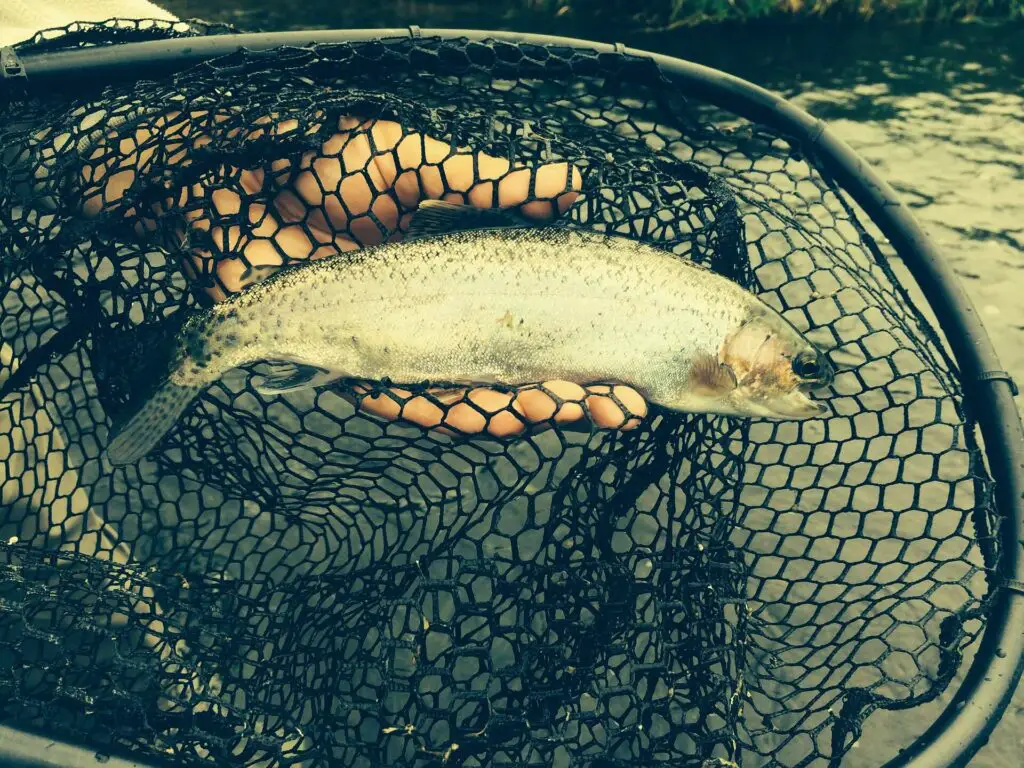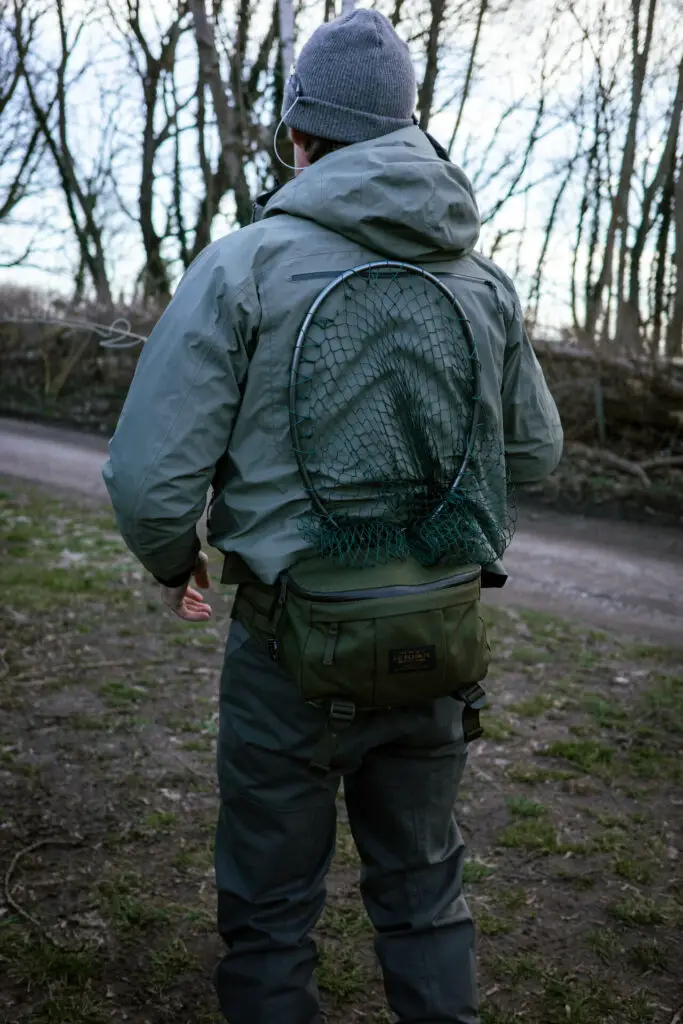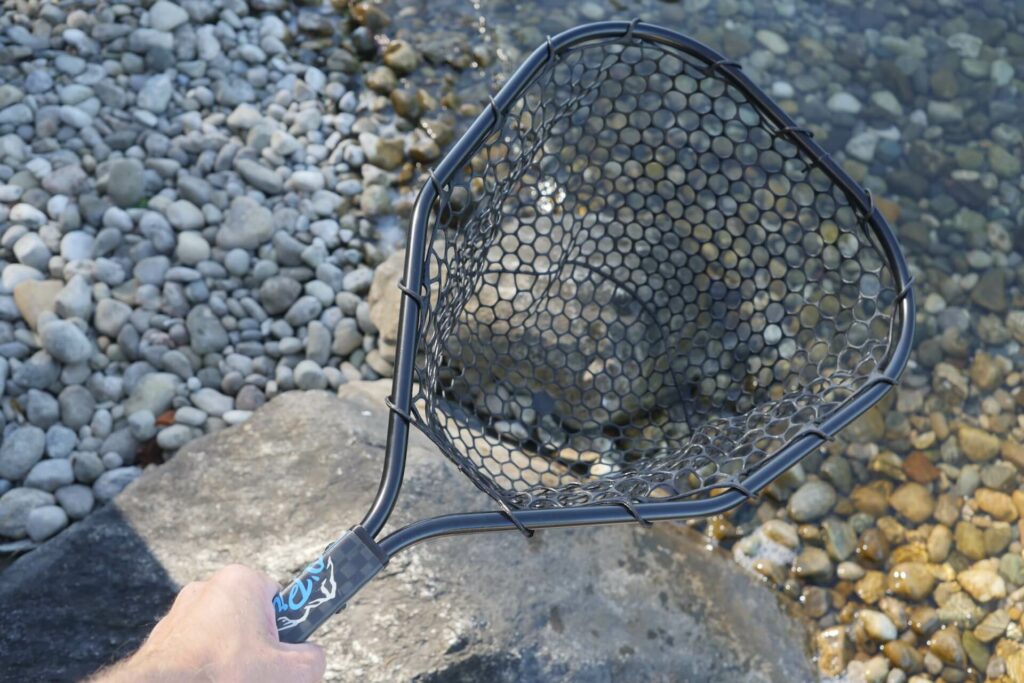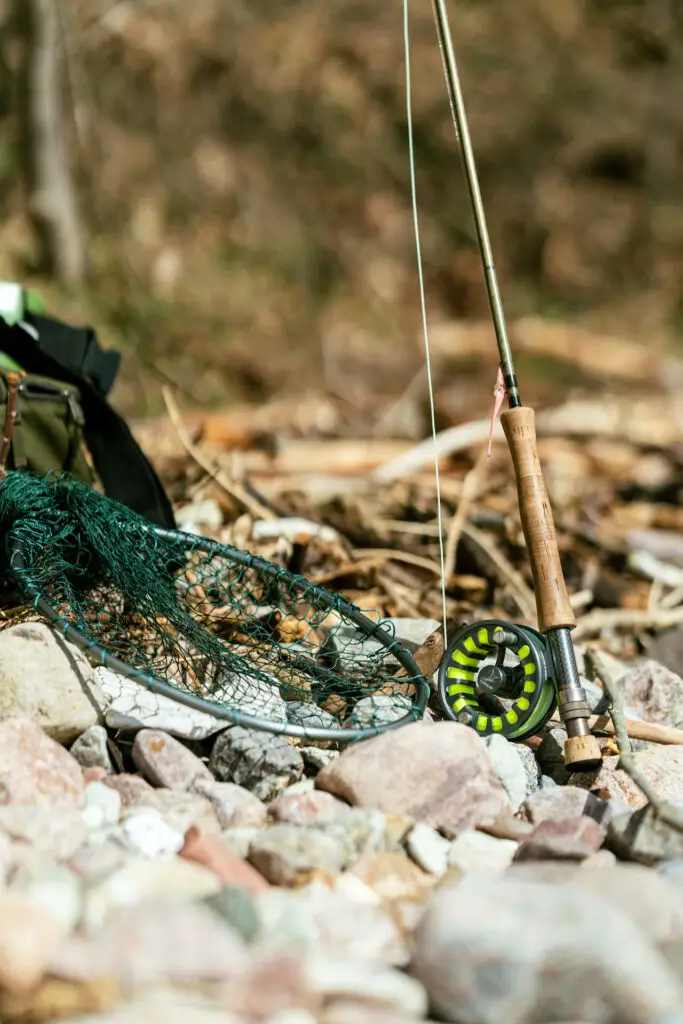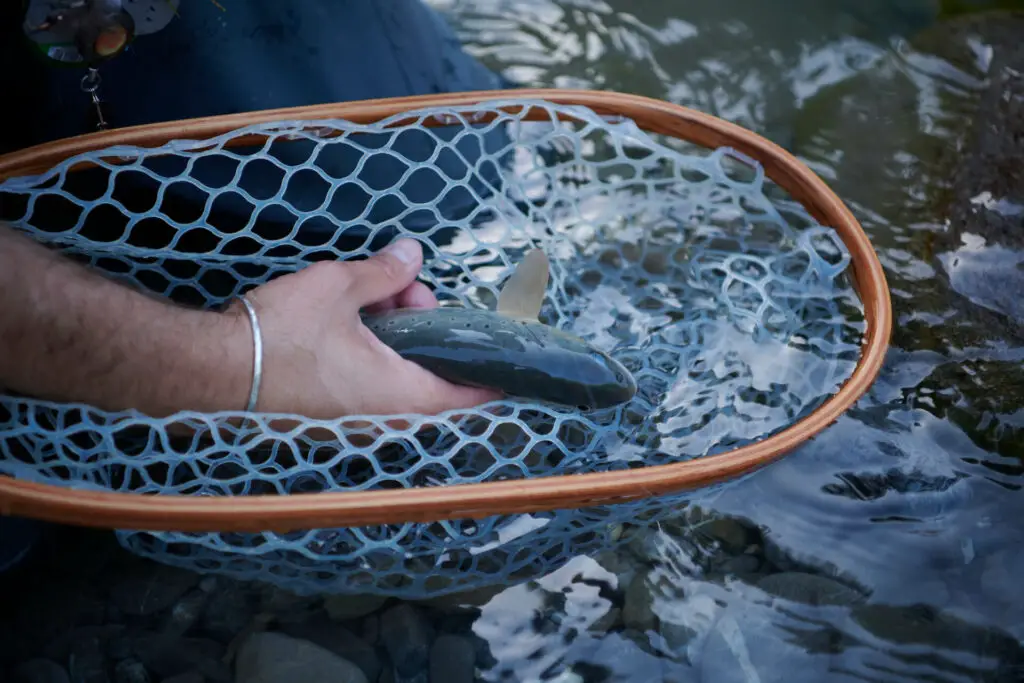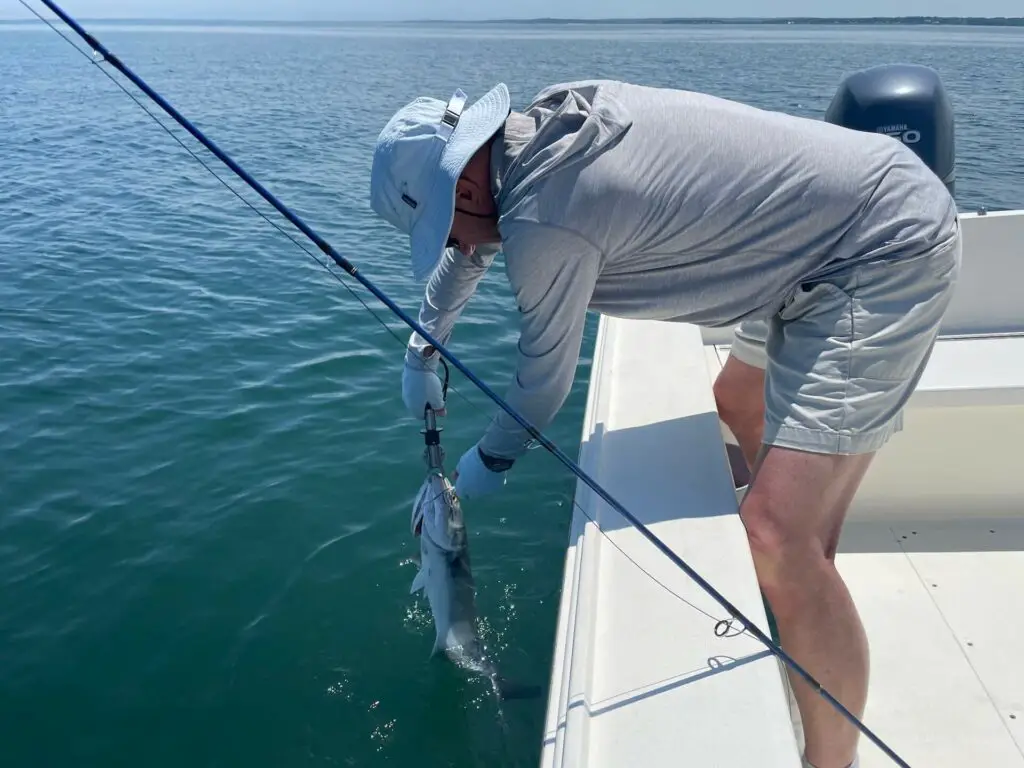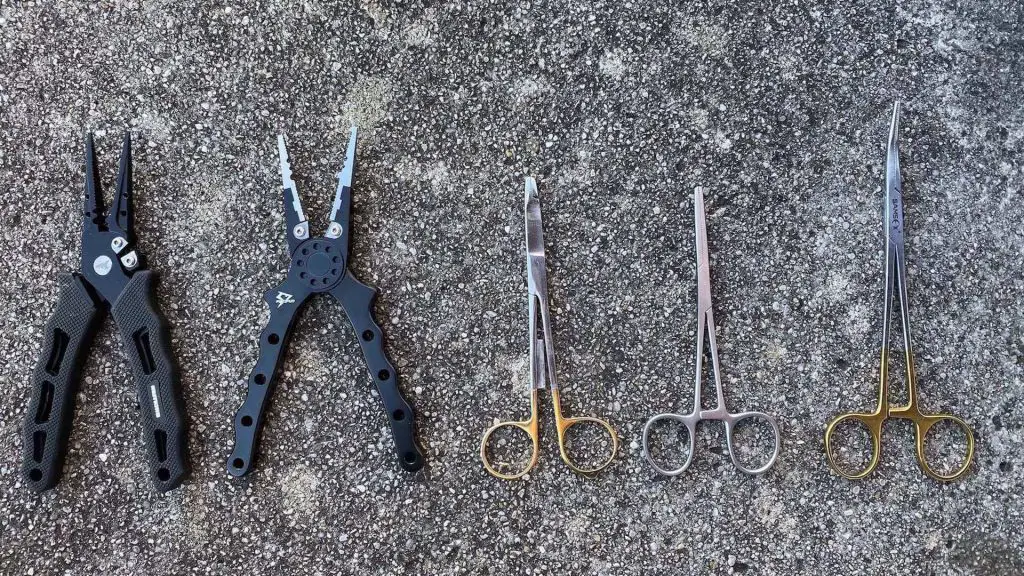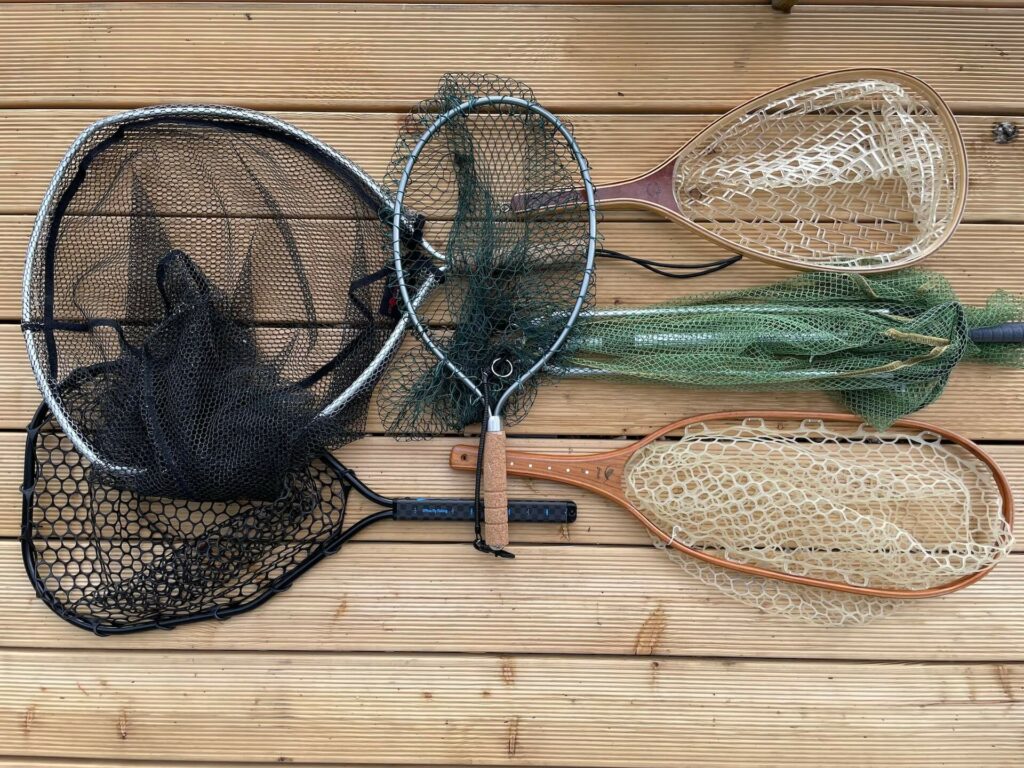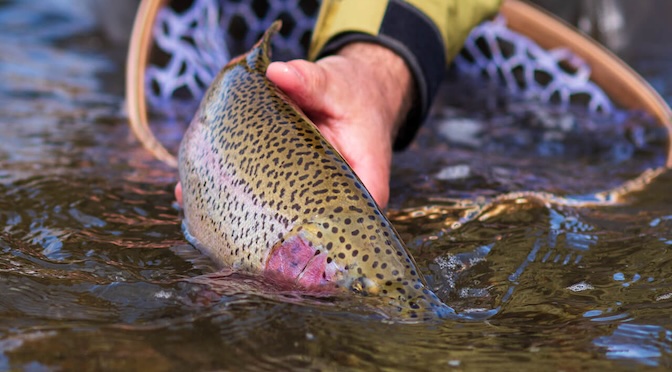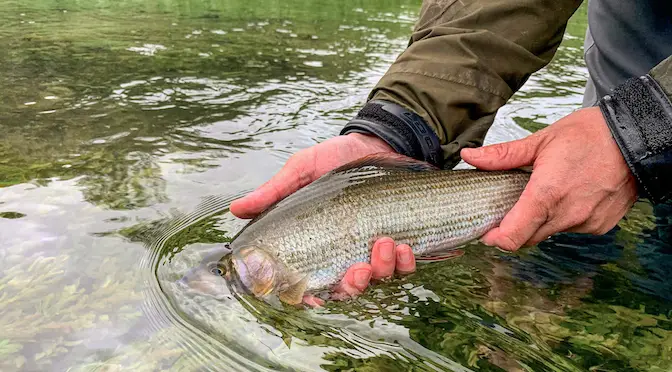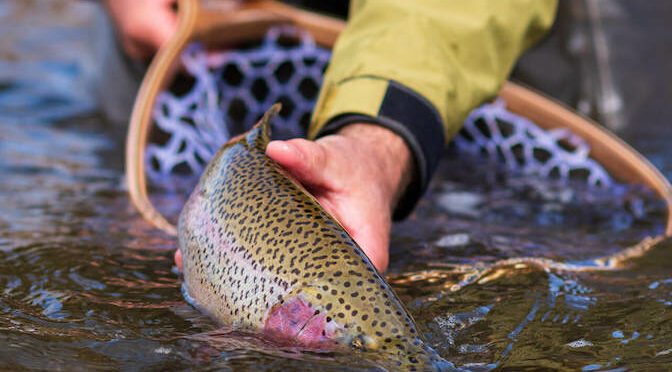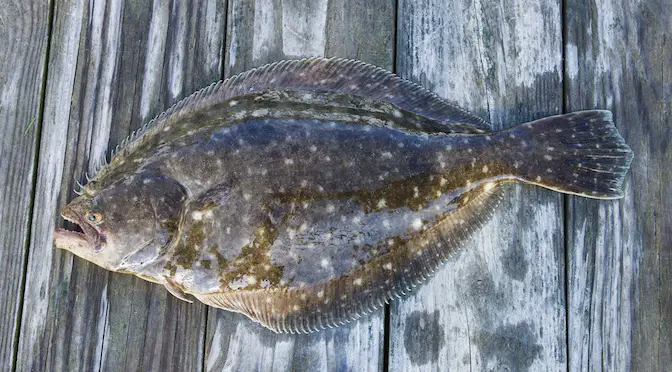Last updated on January 9th, 2024.
- On the Water with the Korkers Bantam Lite - June 26, 2025
- How to Find Trout in Rivers & Streams Anywhere - June 13, 2025
- Educating the Next Generation of Salmon Anglers - June 4, 2025
Fishing, an age-old practice that has seamlessly blended tradition with innovation, often boils down to a simple yet essential tool—the landing net.
It’s not just a mere accessory but an extension of an angler’s skill and strategy. The right landing net can make the difference between a successful catch and a missed opportunity. In the vast array of fishing gear, landing nets come in diverse materials, each with its set of advantages and considerations.
In this guide we’ll delve deep into landing net materials, breaking down the nuances of frame options such as wood, carbon fiber, aluminum, other metal variants, and plastic. Additionally, we will explore net materials, comparing rubber, knotless, clear/ghost, and colored nets.
Add to that, we will also touch upon innovative alternatives for anglers who seek unconventional solutions beyond the traditional fly fishing landing net. Read on!
Frame Materials with their Pros and Cons
When it comes to angling, choosing the right landing frame material is pivotal. Each material has its unique charm, and understanding their pros and cons is crucial to ensuring that your fishing tool complements your style while enhancing your angling adventures.
Wooden Frames
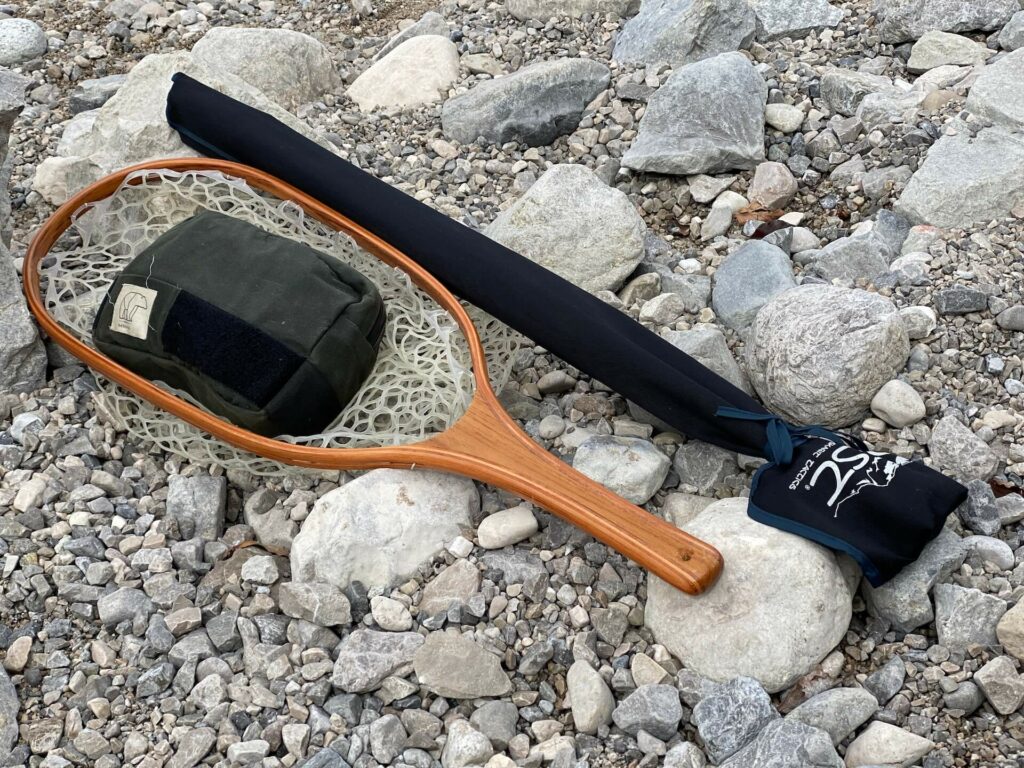
Wooden landing nets carry the aura of angling tradition, harking back to a time when fishing was a craft practiced with finesse. Crafted from natural wood, these nets exude elegance, adding a touch of sophistication to your fishing adventures. Their buoyant nature (not all wooden landing nets float – hence make sure to double-check the description before making a purchase) ensures they float effortlessly, preventing accidental loss in the water, and their traditional charm enhances the overall angling experience.
Pros:
Evokes a sense of angling tradition and finesse.
Adds sophistication to fishing adventures with its elegant appearance.
Buoyant nature prevents accidental loss in water, ensuring longevity.
Cons:
Requires regular maintenance to prevent water damage and maintain buoyancy.
May not be as durable as metal frames, making them susceptible to wear and tear over time.
Carbon Fiber Frames
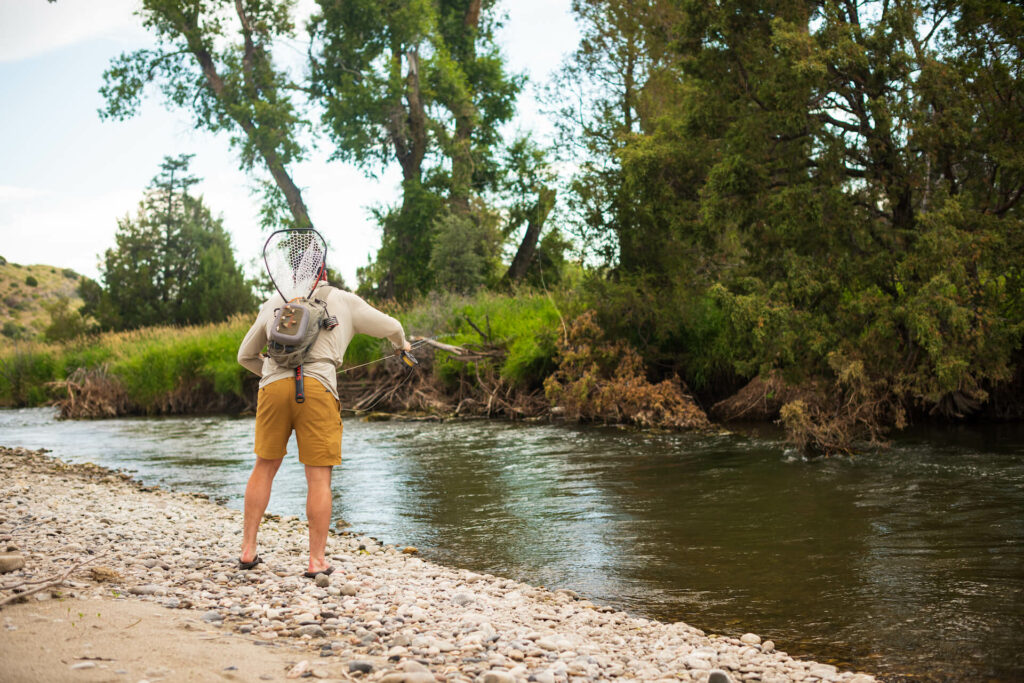
Carbon fiber landing nets represent the epitome of modern angling technology. These nets are incredibly lightweight, reducing fatigue during long fishing sessions. Their sturdy construction ensures durability without compromising on weight, offering anglers a delicate balance between strength and ease of use. Additionally, their resistance to corrosion makes them ideal for anglers venturing into diverse fishing environments.
Pros:
Exceptionally lightweight, reducing fatigue during extended use.
Sturdy construction offers durability without adding unnecessary weight.
Resistant to corrosion, ensuring reliability in various fishing environments.
Cons:
Relatively expensive compared to other materials, making them less budget-friendly.
Aluminum Frames
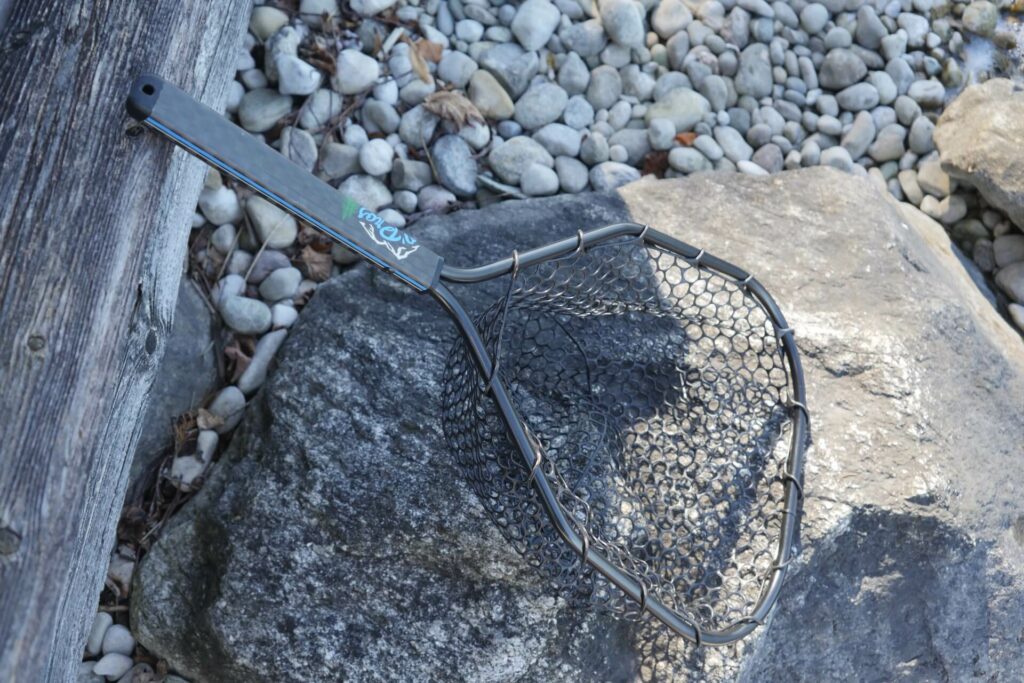
Aluminum landing nets are favored by anglers who frequent saltwater environments. Renowned for their durability and rust resistance, these nets are sturdy and reliable companions for challenging fishing expeditions. Their relatively lightweight design ensures easy handling and transportation, providing anglers with a practical and robust tool for their angling pursuits.
Pros:
Renowned for durability and rust resistance, ideal for saltwater fishing.
Relatively lightweight, allowing for easy handling and transportation.
Robust construction ensures long-lasting performance in various conditions.
Cons:
May lack the traditional aesthetic appeal of wooden frames, prioritizing functionality over visual charm.
Other Metal Options
Some landing nets are crafted from high-strength metals like stainless steel or titanium, offering unparalleled durability. These nets are tailored for heavy-duty fishing, providing the necessary strength and resilience for anglers targeting large and powerful species.
Pros:
Crafted from strong materials like stainless steel or titanium, providing exceptional strength.
Suitable for heavy-duty fishing, perfect for targeting large and powerful species.
Cons:
Heavier than alternatives like aluminum, potentially affecting ease of use for some anglers.
Plastic Frames
Plastic landing nets, while lacking the elegance of wooden or metal counterparts, offer practicality and affordability. These nets are budget-friendly, making them accessible to beginners and anglers on a tight budget. Their lightweight construction ensures ease of handling and transportation, providing novice anglers with a simple yet functional tool to begin their fishing journey.
Pros:
Budget-friendly option, accessible for beginners and anglers on a tight budget.
Lightweight construction ensures easy handling and transportation.
Cons:
Lacks the durability of metal or wooden frames, making them susceptible to damage.
Might not offer the same aesthetic appeal as traditional materials, prioritizing functionality over visual appeal.
Landing Net Materials
Of course, the choice of net material is as vital as the selection of the frame. The net material directly impacts the safety of the fish and the ease of angler’s experience. Here, we explore the diverse types of net materials, each offering unique advantages tailored to different angling needs:
Rubber Nets
Rubber nets are gentle on fish, reducing stress and potential injuries during landing. They are also less likely to tangle with hooks, making the process smoother for anglers. However, they can be relatively heavy and might not float, posing a risk of loss in water.
Knotless Nets
Knotless nets have a smooth surface, minimizing harm to fish. They are gentle on fish scales and fins, ensuring safe catch and release. Additionally, they are less likely to snag hooks, making them convenient for anglers. However, they might be more prone to wear and tear compared to other net materials.
Clear/Ghost Nets vs. Colored Nets
Clear or ghost nets offer a stealthy advantage. They are less visible underwater, reducing the chances of startling fish. Colored nets, on the other hand, allow anglers to see the fish clearly during landing. The choice between the two depends on angler preference and the fishing environment.
Alternatives to Using a Fly Fishing Landing Net
While landing nets are a common and useful tool, some anglers opt for alternatives based on their fishing style and preference. One popular alternative is the catch-and-release approach without using a net. There are a variety of techniques that anglers can choose from when it comes to tackling this approach—for instance, using a fish gripper, a hook removal tool, and barbless hooks.
A fish gripper is a specialized tool designed to provide a secure hold on the fish without direct contact. These grippers typically have a clamp-like design, allowing anglers to handle the fish efficiently while minimizing stress.
On the other hand, hook removal tools aid anglers in gently extracting hooks from the fish’s mouth. These tools ensure a swift and smooth process, reducing discomfort for the fish.
On to the barbless hooks—these make hook removal easier and faster, minimizing the time the fish spends out of the water and decreasing stress.
But aside from all that, anglers can also opt to do the hand landing technique, but it’s more advanced, and requires confidence. This approach involves carefully and directly lifting the fish out of the water, supporting its weight properly to prevent injury. While it requires experience and a deep understanding of the fish’s movements, hand landing allows for a quick and safe release, minimizing stress on the fish.
Conclusion
The choice of landing net materials and net types depends on various factors, including angler preference, fishing style, target species, and budget. Each material and net type has its unique advantages and considerations.
While you’ll be able to catch fish without a landing net obviously, using one makes life easier for you and the fish. This is particularly true when you practice catch and release fishing, where a quick and safe release is crucial. This is even more important when you’re fishing in warmer weather and water temperatures where fish are exposed to more stress.
Leonard Schoenberger and his team spend countless hours on the water testing and reviewing new gear. Our goal is to share that knowledge with you to help you better understand the world of fly fishing and make good decisions when it comes to buying gear.
Frequently Asked Questions
What are the common frame materials used in fly fishing nets, and how do they differ?
The most common frame materials are wood, bamboo, aluminum, and carbon fiber. Wood and bamboo nets offer a classic look, with many anglers appreciating their natural aesthetic. They can be quite durable, but they might be heavier than other materials. Aluminum is lightweight, corrosion-resistant, and can handle rugged use. Carbon fiber is also lightweight and has the added advantage of being extremely strong and durable. The best choice depends on your preference for weight, aesthetics, and durability.
Why is the type of netting material crucial in fly fishing?
The netting material plays a pivotal role in ensuring the fish’s safety. Rubberized netting is less likely to harm the fish’s scales, fins, or its protective slime layer. This is particularly important for catch and release fishing, ensuring the fish’s chances of survival after being released. Moreover, rubberized nets are less prone to tangling with hooks, making the release process smoother.
Are there any advantages to having a collapsible or foldable net frame?
Yes, collapsible or foldable net frames are particularly beneficial for anglers who hike or wade deep into fishing spots. Such frames make the net more portable and less cumbersome to carry around. They can easily fit into or attach to a backpack, making them a favorite for those fishing in remote locations.
How does the shape of the net frame affect the landing process?
The shape can indeed influence the ease of landing fish. Teardrop-shaped nets are versatile and can accommodate different fish sizes. D-shaped nets with a flat bottom are easy to lay against the stream bed, which can help secure a fish. Circular nets allow for a more even distribution of the fish’s weight. The optimal shape largely hinges on the angler’s preference and the specific fishing scenarios they face.
Can I replace the netting on my fly fishing net frame?
Yes, many fly fishing nets are designed to allow for netting replacement. If the netting wears out or if you wish to switch to a more fish-friendly material, you can often purchase replacement netting and attach it to your existing frame. Ensure that the replacement netting is compatible with your frame size and shape.

